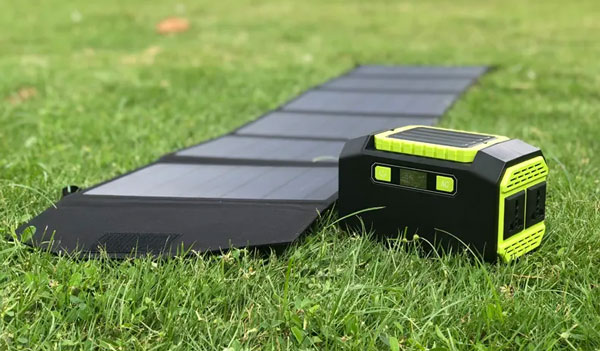Portable solar panels work by capturing sunlight and converting it into useful electricity through a device called a charge controller or regulator. The controller is then connected to the battery, keeping it charged.
What is a solar conditioner?
The solar conditioner ensures that the electricity generated by the solar panel is intelligently transferred to the battery in a way suitable for the battery chemistry and charge level.
A good regulator will have a multi-stage charging algorithm (usually 5 or 6 stages) and provide different programs for different types of batteries. Modern, high-quality regulators will include specific programs for Lithium batteries, while many older or cheaper models will be limited to AGM, Gel and Wet batteries. It is important that you use the correct program for your battery type.
A good quality solar regulator will include a number of electronic protection circuits to protect the battery, including reverse polarity protection, short circuit protection, reverse current protection, overcharge protection, transient overvoltage protection, and overtemperature protection.

Types of Solar Regulators
There are two main types of solar conditioners available for portable solar charging panels. Pulse Width Modulation (PWM) and Maximum Power Point Tracking (MPPT). They all have their own advantages and disadvantages, which means each is suitable for different camping situations.
Pulse Width Modulation (PWM)
Pulse Width Modulation (PWM), the regulator has a direct connection between the solar panel and the battery and uses a "quick switch" mechanism to regulate the charge flowing into the battery. The switch remains fully open until the battery reaches the sink voltage, at which point the switch begins to open and close hundreds of times per second to reduce the current while keeping the voltage constant.
In theory, this type of connection reduces the effectiveness of the solar panel because the panel's voltage is lowered to match the battery's voltage. However, in the case of portable camping solar panels, the practical effect is minimal, because in most cases the panel's maximum voltage is only around 18V (and decreases as the panel heats up), while the battery voltage Usually between 12-13V (AGM) or 13-14.5V (Lithium).
Despite the small loss in efficiency, PWM regulators are generally considered a better choice for pairing with portable solar panels. The benefits of PWM regulators compared to their MPPT counterparts are lower weight and greater reliability, which are key considerations when camping for extended periods of time or in remote areas where service may not be easily accessible and may be difficult to find alternative regulator.
Maximum Power Point Tracking (MPPT)
Maximum power point tracking MPPT, the regulator has the ability to convert excess voltage into additional current under the right conditions.
An MPPT controller will constantly monitor the panel's voltage, which is constantly changing based on factors such as solar panel heat, weather conditions and the position of the sun. It uses the full voltage of the panel to calculate (track) the best combination of voltage and current, then reduces the voltage to match the charging voltage of the battery so it can supply additional current to the battery (remember power = voltage x current).
But there is an important caveat that reduces the practical effect of MPPT controllers for portable solar panels. To get any real benefit from the MPPT controller, the voltage on the panel should be at least 4-5 volts higher than the battery's charge voltage. Given that most portable solar panels have a max voltage of around 18-20V, when they get hot it can drop to 15-17V, while most AGM batteries are between 12-13V and most Lithium batteries are 13-14.5V , the voltage difference is not enough for the MPPT function to have a real effect on the charging current.
Compared with PWM controllers, MPPT controllers have the disadvantage of being heavier in weight and generally less reliable. For this reason, and their minimal impact on power input, you don't often see them used in portable solar panels.
4 Myths about solar panels
1. Solar panels don't work well in cold weather.
This is not true. In fact, the modules draw their energy from light rather than heat. So cold weather has nothing to do with it not working. Solar panels work better in cold weather. It keeps them from getting hotter and absorbing less energy from the sun.
2. Solar panels will destroy my roof.
It's reasonable to worry about whether solar panels will affect the roof. But you don't need to. If the installer followed the manufacturer's instructions, there is no need to worry.
3. Solar panels require constant maintenance.
One of the biggest fallacies of solar power. Solar panels are designed to be durable. It requires little maintenance. You might have an annual inspection, but otherwise, a properly installed solar panel requires little maintenance.
4. Solar panels don't last long.
In fact these panels can withstand harsh weather conditions and last for decades.
ATO offers portable solar panels that use high-efficiency monocrystalline silicon cells with a power generation efficiency of up to 22%. The inverter is available with 30W, 40W, 60W, 80W, 100W and 120W solar panels. Portable solar panels can be paired with portable generators of different powers, durable and waterproof, with a long service life, making them ideal for outdoor use. Solar generators and portable solar panels are available for camping.
